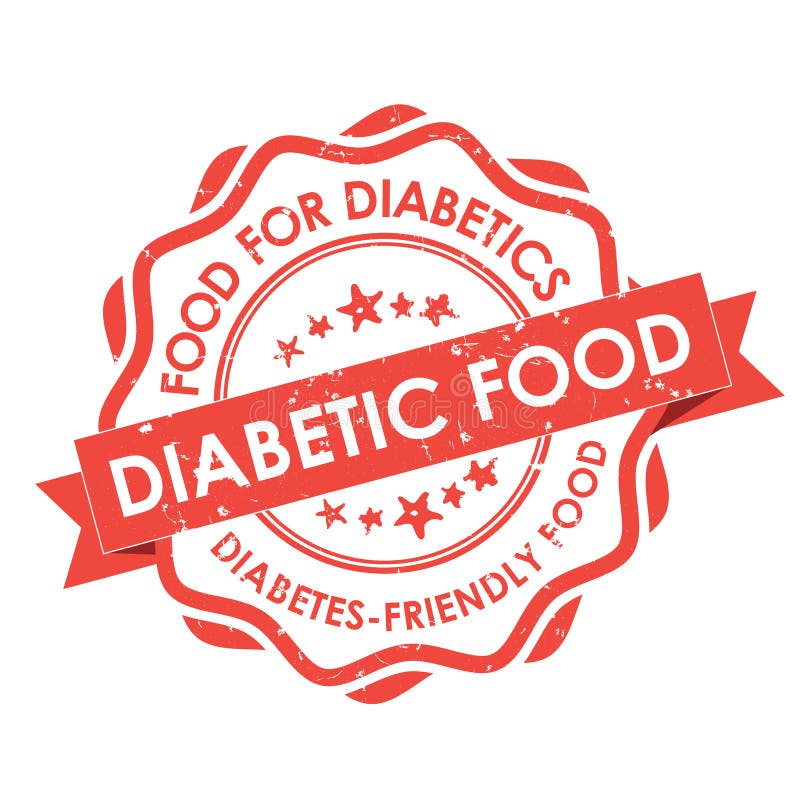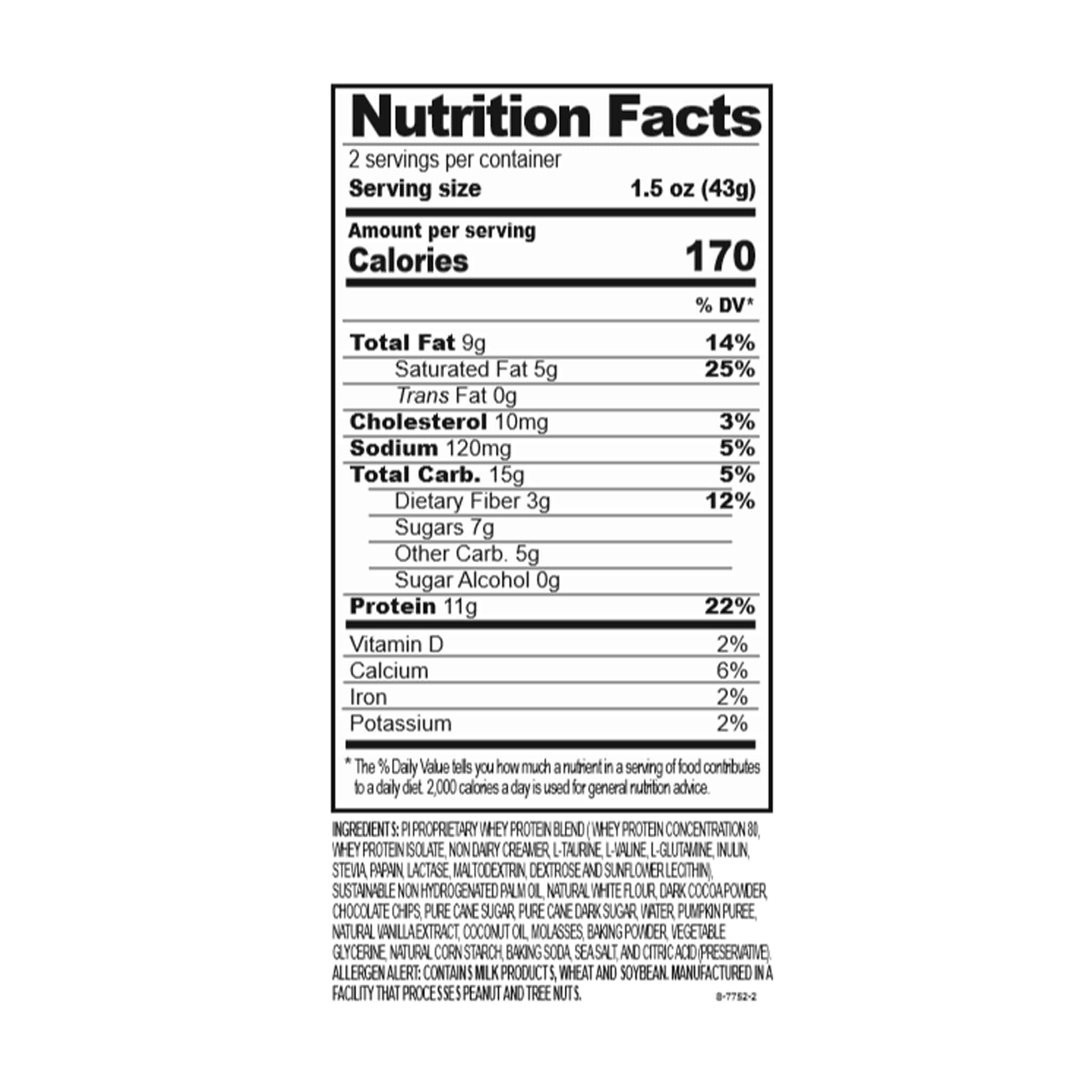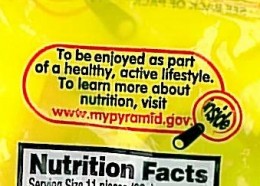41 reading nutrition labels for dummies
How to read food labels | healthdirect How to read the Nutrition Information Panel. The Nutrition Information Panel tells you the size of a standard serving of the product and which nutrients are contained in that serving. You can use the label to compare the product with what's in similar packaged foods. Look out for information about: Energy: A kilojoule is a measure of energy. How To Read Food and Beverage Labels - National Institute on Aging At the top of the Nutrition Facts label, you will find the total number of servings in the container and the food or beverage's serving size. The serving size on the label is based on the amount of food that people may typically eat at one time and is not a recommendation of how much to eat. Read more about serving and portion sizes.
Nutrition Labels for Dummies In 1990 the Nutrition Labeling and Education Act was passed, so the USDA and FDA became in charge of deciding what information you need to know about the food you eat. Every food and beverage product must at least contain the following information: Nutrition facts are quantities of protein, fat (saturated, unsaturated, and trans), carbohydrate (sugar and fiber), vitamins, minerals, and serving ...
Reading nutrition labels for dummies
HOW TO READ A NUTRITION LABEL LIKE AN EXPERT - Fit Dummies Also look for options that are high in fiber, which is important for digestive health, and low in sugar. Proteins The third macronutrient, after fats and carbohydrates, is protein. Protein should only make up between 10% and 35% of our diet but it is absolutely essential for building muscle mass and keeping our energy levels high. How to Understand and Use the Nutrition Facts Label | FDA Dietary fiber, vitamin D, calcium, iron ad potassium are nutrients on the label that Americans generally do not get the recommended amount of. They are identified as nutrients to get more of.... Food Labels | CDC All the numbers on this label are for a 2/3-cup serving. This package has 8 servings. If you eat the whole thing, you are eating 8 times the amount of calories, carbs, fat, etc., shown on the label. Total Carbohydrate shows you types of carbs in the food, including sugar and fiber. Choose foods with more fiber, vitamins, and minerals.
Reading nutrition labels for dummies. Understanding Food Nutrition Labels | American Heart Association Learn what to look for on the label. 1 - Start with the serving information at the top. This will tell you the size of a single serving and the total number of servings per container (package). 2 - Next, check total calories per serving and container. How to Read a Nutrition Label - dummies Nutrition labels give you important information about the fat, calories, and fiber in your food. By knowing how to interpret percentage daily value numbers on labels, you can adjust your diet and portion sizes for better weight control and good health. About This Article This article is from the book: Dieting For Dummies, 2nd Edition How to Read a Food Label | Food Allergy Research & Education Make a habit of carefully reading labels to ensure you avoid any potential allergens. While all ingredients in a food are supposed to be listed in the ingredients list, FALCPA covers only the eight most common allergens. These are milk, egg, peanut, tree nuts, soy, wheat, fish and crustacean shellfish. PDF MOVE! Nutrition Handout N10: How to Read a Nutrition Facts Label size" is the official term used on food labels. Nutrition facts given on the food label are based on one serving. Be sure to look at the number of servings in the container. Even small containers may have more than one serving. If you eat the whole container, then you must multiply the nutrition values by the number of servings in the ...
Nutrition Label Reading for Smarties - Elizabeth Borelli Read the Nutrition Label carefully to make sure the word "whole" precedes every grain listed, or look for the "100% whole-grain" claim. This is one term regulated by the FDA to ensure that all grains used in the product are, in fact, whole. Aim for 25-35 grams (g) of total fiber each day -or 6-8 grams per meal, and 3-4 grams per snack Food Labels 101: Understanding the Nutrition Facts Label Nutrition labels are based on a daily 2,000 calorie diet. Depending on your age, gender and activity level, you may need to consume more or less than 2,000 calories per day, so keep this in mind when viewing each label. Now let's take a look at the parts of the nutrition facts label and break it all down. Anatomy of a Nutrition Facts Label PDF A Guide to Reading Food Labels - University of Rochester Make healthy choices easier by understanding the sections of the Nutrition Facts label. 1. Serving Size. The serving size is a measured amount of food. In the sample label, the serving size is one cup, and there are two servings per container. If you ate the whole container, you would eat two cups, which doubles the calories and other nutrient ... PDF Label Reading Basics for Diabetes - Veterans Affairs The area on the label describing Percent Daily Values is there as a reference for you. The information listed is not for the specific food you are eating, but to provide you with goals for healthy eating. Sodium Fiber If a person eats 1 cup of this food, they Total Fat Sodium NUTRITION FACTS Serving Size ½ cup (114g) Servings Per Container: 4
Nutrition Facts Label Reading for Dummies | EH YOUniversity $19 Nutrition Facts Label Reading for Beginners This class will make sense of the nutrition fact label so you can get out of the grocery store in under 30 minutes. Be a label reading detective. Master the art of reading labels. Reduce the amount of time you spend in the grocery store. Learn what information is most important. Quick Tips for Reading the Nutrition Facts Label 1. Use a pair of scissors to cut along the dotted lines. 2. Fold along the center line. 3. Keep the Tip Card in your wallet or purse. Calories230 Amount per serving Serving size 2/3 cup (55g) 8... Reading Food Labels | ADA - American Diabetes Association The Nutrition Facts labels on foods are really the key to making the best choices. We'll cover the basics so that these labels make shopping easier for you. Get started Understanding Carbs You've heard it all. From carb-free to low-carb, to whole and empty carbs, it's hard to know what it all means. Learn more Food & Blood Sugar How to Read a Food Label - WebMD To be considered high in fiber, a food must contain least 5 grams per serving. Fruits, vegetables, and whole grains provide fiber. Fat. Fat has more calories per gram than carbs or protein, and all...
3 Ways to Read Nutrition Facts on Food Labels - wikiHow When a label lists percentages for fat, cholesterol, sodium, or protein, they're referring to the percentage in a single individual serving. So if a jar of salsa has 10% of your daily serving of sodium but there are 20 servings in the jar, then the entire jar contains 200% of your daily recommended sodium intake. [2] 3
Reading Food Labels When You Have Diabetes - WebMD It has measurements of fat, cholesterol, sodium, carbohydrates, protein, vitamins, and minerals for a typical amount of that food. This information can make it easier for you to choose foods that...
Reading food labels: Tips if you have diabetes - Mayo Clinic Look for foods with fats, cholesterol and sodium on the low end of the Daily Value; keep fiber, vitamins and minerals on the high end. If your doctor or registered dietitian recommends more or less than 2,000 calories a day, you may need to adjust the percentage accordingly — or simply use the percentage as a general frame of reference.
Making the Most of the Nutrition Facts Label Infographic Eat foods with nutrients your body needs like calcium, dietary fiber, iron, potassium, and Vitamin D. % Daily Value. The % Daily Value (DV) tells you the percentage of each nutrient in a single serving in terms of the daily recommended amount. To consume less of a nutrient (such as saturated fat or sodium), choose foods with a lower % DV (5% or ...
How to Read a nutrition label - WonderHowTo Watch this video tutorial to learn how to read a nutrition label, For Dummies. Reading food labels helps you control portion sizes and get proper nutrition. Understand a Percentage Daily Value, vitamins and nutrients, calories, and fiber for better nutrition and overall health. Read a nutrition label. Click through to watch this video on ...
What to Look For on Nutrition Labels - dummies For someone who eats 1,500 calories a day, that's no more than 33 to 50 grams. Remember, the Percentage Daily Value numbers on Nutrition Facts labels are based on 65 grams of fat a day (30 percent of total calories) and calculated on a 2,000-calorie-per-day diet. Trans fatty acid is the newest item to be added to the Nutrition Fact label ...
The Basics of the Nutrition Facts Label The following is a quick guide to reading the Nutrition Facts label. Step 1: Start with the Serving Size Look here for both the serving size (the amount people typically eat at one time) and the number of servings in the package. Compare your portion size (the amount you actually eat) to the serving size listed on the panel.
How to Read Nutrition Facts | Food Labels Made Easy - YouTube To support our channel and level up your health, check out:Our Fast Weight Loss Course: B...
How to Use the Nutrition Facts Label - Diet Doctor 3. Calculate net carbs per serving. Third, check the grams of dietary fiber per serving (circled in green, above). Subtract the fiber (green) from the total carbohydrates (blue) to get the net carbs. This chocolate has 9 grams of net carbs per serving (14g carbs - 5g fiber = 9g net carbs).
How to Read a Nutrition Label For Dummies - YouTube Nutrition labels give you important information about the fat, calories, and fiber in your food. By knowing how to interpret percentage daily value numbers o...
Food Labels | CDC All the numbers on this label are for a 2/3-cup serving. This package has 8 servings. If you eat the whole thing, you are eating 8 times the amount of calories, carbs, fat, etc., shown on the label. Total Carbohydrate shows you types of carbs in the food, including sugar and fiber. Choose foods with more fiber, vitamins, and minerals.
How to Understand and Use the Nutrition Facts Label | FDA Dietary fiber, vitamin D, calcium, iron ad potassium are nutrients on the label that Americans generally do not get the recommended amount of. They are identified as nutrients to get more of....
HOW TO READ A NUTRITION LABEL LIKE AN EXPERT - Fit Dummies Also look for options that are high in fiber, which is important for digestive health, and low in sugar. Proteins The third macronutrient, after fats and carbohydrates, is protein. Protein should only make up between 10% and 35% of our diet but it is absolutely essential for building muscle mass and keeping our energy levels high.












Post a Comment for "41 reading nutrition labels for dummies"